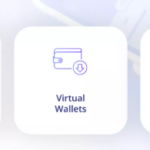About Aurigami
Aurigami Defi Coin is a decentralized, non-custodial liquidity protocol. The protocol enables users to effortlessly lend, borrow, and earn interest with their digital assets. Depositors provide liquidity to the protocol to earn a passive income, while borrowers are able to borrow in an over-collateralized fashion.
Compound Finance Facts
| Compound | Facts |
|---|---|
| Defi Coin Name | Aurigami |
| Short Name | PLY |
| Total Supply | 10,000,000,000 |
| Ethereum Contract | 0x1ab43204a195a0fd37edec621482afd3792ef90b |
| Chat Option | Click Here To Visit Compound Chat |
| Document | Click Here To View Document |
| Official Website | Click Here To Visit |
Interaction with Aurigami
To interact with Aurigami Defi, users simply deposit their preferred assets supported by the protocol. Depositing assets into entitles users to interest earning based on the market borrowing demand. Additionally, deposited assets can be used as collaterals to borrow other assets. Interest earned from deposited assets will help offset the accumulated interest from borrowing.
Storage of funds
User deposited funds are allocated in Smart Contracts. Depositors/Lenders will be issued tokenized yield-bearing tokens (auTokens) which will be used for on-demand withdrawal of deposited funds from the pools. AuTokens are tradable and transferrable.
Risks
No protocol can be considered entirely risk free. The risks related to the protocol may potentially include Smart Contract risks and Liquidation risks. The team has taken necessary steps to minimize these risks by undergoing audits and keeping the protocol public and open sourced.
Deposits / Withdrawals
Deposits
There are no minimum or maximum deposits imposed.
Withdrawals
Users can withdraw assets as long as those funds are not actively being used to borrow and withdrawal of those assets would not cause a liquidation on your loans.
Enable the use of assets as collateral
Users have to enable the use of deposited asset as collateral for borrowing. The toggle can be found at the “Deposit” tab under “My Account”. The Borrow Limit will then automatically adjust based on the amount of collateral made available.
Earning interest
Depositors will receive continuous earnings (interest) on their deposited assets. The earning rates adjust algorithmically for each asset based on their independent market conditions.
The auToken is a representation of user’s asset balance supplied to the Aurigami protocol. auToken minted will be based on the underlying asset deposited to the protocol (auUSDC, auDAI etc). The exchange rate between auTokens to the underlying appreciates as more interest is earned in the market.
Tokenomics
Aurigami is owned and governed by PLY token holders. The governance token aims to incentivize ecosystem participants and share a vision of alignment between various stakeholders within the ecosystem.
Liquidity Mining with Progressive Locking (Papermill)
The liquidity mining program is designed in a way that liquidity provider interests are aligned with the protocol’s long-term success. It rewards early participants generously while ensuring that the circulating supply of our governance token PLY increases gradually. This is achieved by a progressive locking mechanism that encourages delayed gratification.
Borrow
To borrow assets on Aurigami, user is required to deposit an accepted asset to be used as collateral. The deposited asset will be enabled as collateral for borrowing by default.
The maximum amount that can be borrowed depends on the amount of collaterals on the user’s account, shown as “Borrow Limit” under “My Account” section.
Borrow limit
Borrow Limit represents your percentage of the maximum amount you can borrow, based on the value you have deposited as collateral and the available liquidity. Borrow limit = borrow utilisation at 100%.
As liquidation will happen as user’s borrowed position exceeds the borrow limit (when borrow utilisation is > 100%),
Borrow Utilisation
Aurigami Defi, Borrow utilisation serves as a visual indication of the proportion of total deposited collateral against the total value of borrowed assets, in other words, how close is the position to being liquidated.
The lower the % of utilisation, the safer the user’s collateral is.
Borrow utilisation < 75%: Green (Relatively safe)
Borrow utilisation between 75% to 90%: Orange (Please pay closer attention to positions)
Borrow utilisation between 90% to 95%: Red (Please improve borrow utilisation)
Borrow utilisation > 95%: High risk of liquidation
Improving Borrow Utilisation
To improve Borrow Utilisation, the user can:
- Repay a portion or the full amount of the borrowed amount
- Add more collateral
Liquidations
Aurigami Defi, Liquidation happens when a borrower’s borrowed asset amount crosses the “borrow limit”, signifying collaterals are not fully covering the borrowed amount as per collateral factors. In a liquidation event, the liquidators will seize the available collateral from accounts that crosses the liquidation threshold and execute market transaction to help repay the borrower’s debt, taking a fee from the process.
Aurigami Markets









